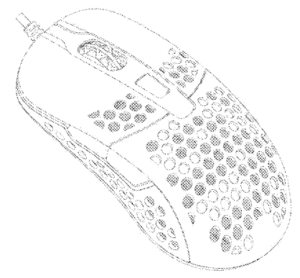
Hello design patent colleagues. This blog article presents the third of three practice tips for prosecution of US design patent applications.
MPEP § 1503 (link) talks about the use of broken lines. Broken lines may be used, among other things,
- to show visible environmental structure; and
- to show unclaimed subject matter.
Nowhere in MPEP § 1503, or anywhere else in the MPEP, is there any hint or suggestion that any other approach may be used to show unclaimed subject matter. Thus a practitioner might be forgiven for assuming that the only way to show unclaimed subject matter is by means of broken lines.
The point of this blog article is to remind the reader that you can do anything you like to show unclaimed subject matter. You can for example use “a colored overlay” to show unclaimed subject matter. For an example of this, see US Design Patent number 946574 (PDF). It says:
The portions of the article shown with grey color overlay form no part of the claimed design.
In one of my own cases that is soon to issue, this statement appears:
The portions of the [article of manufacture] that are shaded red form no part of the claimed design.
One might think that whatever it is that the practitioner uses to indicate what is claimed and what is not must be something in the figure itself (broken lines, say, or the gray color overlay or the red shading). Not at all! You can simply use words to communicate unclaimed subject matter. See for example US Design Patent number 922904 (PDF) in which I said:
The portions of the double clasp for jewelry item that are not visible in the figures form no part of the claimed design.
Yes, in that patent, the way you know what is unclaimed is by looking to see what portions of the clasp are “not visible”. Those parts are unclaimed.
So there you have practice tip number 3. To see the first two practice tips, click here and here.

One Reply to “Three design patent practice tips — tip number 3”